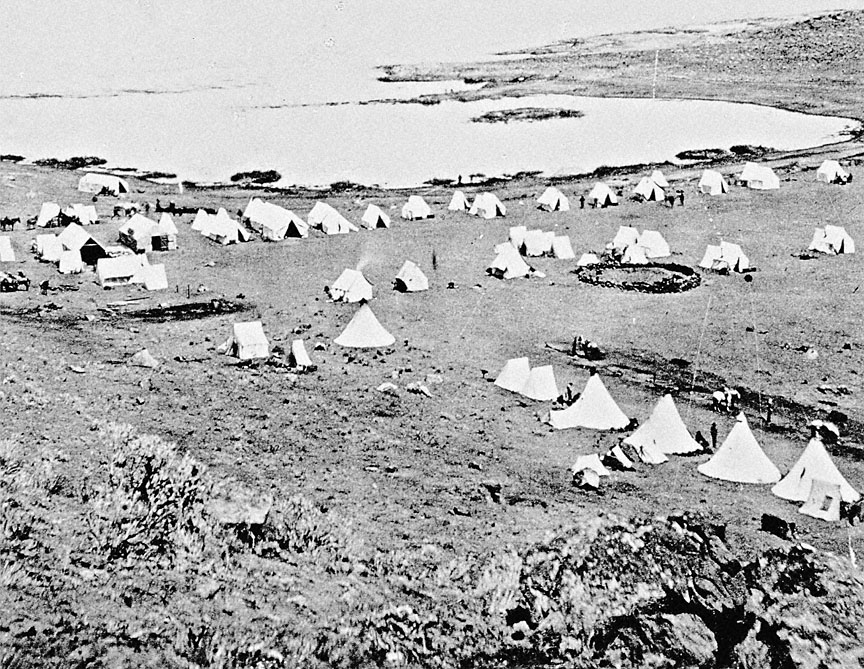- Catalog No. —
- OrHi 399
- Date —
- 1873
- Era —
- 1846-1880 (Treaties, Civil War, and Immigration)
- Themes —
- Arts, Government, Law, and Politics, Oregon Trail and Resettlement
- Credits —
- Oregon Historical Society
- Regions —
- Southwest
- Author —
- Eadweard Muybridge
Gillem's Army Camp, 1873
As an agent of the Federal Government, Eadweard Muybridge recorded the final stages of the Modoc War in 1873 with this and many other photographs. This photograph of Colonel Alvan Gillem’s Army Camp at Tule Lake, California, was originally part of a panoramic set. The Modoc War ignited after a group of Modoc tribesmen rebelled against U.S. Government orders to abandon their land and relocate to the Klamath Reservation with all Klamath, Yahooskin, and Modoc Indians. U.S. Army troops were dispatched to remove the Modocs from their land, which, consequently, led to violence. The Native fighters made their last stand in the lava beds near Tule Lake.
The young Eadweard Muybridge emigrated to the U.S. from England in the 1850s. By the end of the next decade, he became a successful photographer, celebrated for his photographs of San Francisco and his 260 published views of the Yosemite Valley. In 1878, to settle a bet for friend Leland Stanford (railroad tycoon, former governor of California), Muybridge snapped sequential photographs of a horse running to prove that the horse lifted all four feet simultaneously. Muybridge later projected the images sequentially on a screen. Ten years later, the photographer demonstrated his new technique for Thomas Edison, who eventually invented the motion picture camera. Though he was an influential promoter of the American West and provided important photographs of one of the most significant Indian wars in the nation’s history, Muybridge is recognized today more for his contribution to the history of motion pictures.
Further Reading:
Palmquist, Peter. “Imagemakers of the Modoc War.” The Journal of the Shaw Historical Library, 1:1, 1986.
Written by Robert Donnelly, Oregon Historical Society, 2003.
